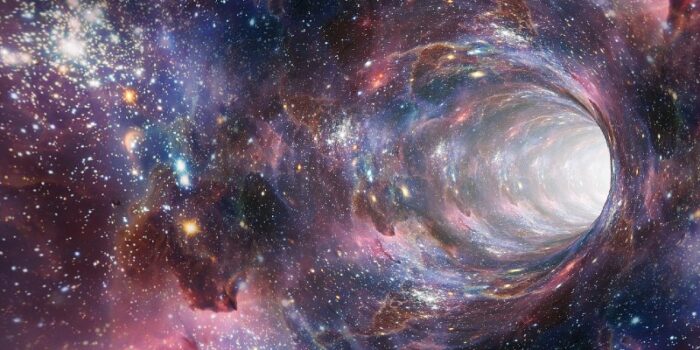
How fun and convenient would it be to travel from one city to another within minutes rather than taking hours on a train or plane?
Scientists have been asking the same question about space travel. What if we could go from one galaxy to another through a shortcut that takes only a few hours rather than millions of lightyears? These ‘shortcuts’ in space travel are called wormholes, which you may have heard about in popular science-fiction movies and books.
Wormholes are hypothetical bridges in space that allow you to travel through the universe faster and cut down travel time from years to hours. But this theory has only been valid on paper so far. Physicists are yet to find concrete proof of their existence. There is also a debate over how to identify them and how they can exist with the gravitational pull of celestial bodies.
However, a team of scientists from the University of Sofia in Bulgaria recently discovered a method to detect wormholes that might lead to the identification of wormholes in the future. Let’s find out how wormholes work, and what this means for the future of space exploration!

Source: tenor
We know black holes are cosmic bodies in space where gravity pull is so intense that molecules and light cannot squeeze out. Physicists have theorised that there are ‘white holes’ that regurgitate the matter swallowed by black holes in the form of particles and radiation. Some physicists believe that black holes and white holes are connected by a similar space-time tunnel, which is a wormhole.
Scientists at the University of Sofia have theorised that the entrance of a wormhole could look similar to black holes that were already discovered, like Sagittarius A* or M87* in 2019. They say that the light and radiation that encircles the entrance of a black hole are very similar to the radiation enclosing the opening of a wormhole. Hence it would be challenging to identify them discretely.
Famous physicist Albert Einstein talked about wormholes, leading many scientific communities to believe in their existence. His theory of general relativity talks about how our universe is shaped and includes wormholes.
Physicist Nathan Rosen worked with Einstein on a theoretical structure that came from deciphering Einstein’s field equations associated with the theory of relativity. The structure was a bridge in space-time that could connect two different points in space. It was named the Einstein-Rosen bridge.

The Einstein-Rosen bridge model. Source: Wikipedia
Many scientists have tested Einstein’s theory of relativity and reached cogent evidence, leading them to believe that wormholes may not be just a theory. But the ones who doubt it say that wormholes cannot exist because they would eventually collapse under their own gravitational pull. Since gravity affects everything in the universe, it would affect wormholes too and implode them. So the wormholes would need a counter-gravitational force from inside to remain in their tunnel form.
The possible existence of wormholes opens up many prospects for space exploration and travel. Among other things, it could presumably mean that we can time travel. But for now, we first need to build the technology required to identify wormholes correctly and study them further in case one is actually spotted.
Do you believe wormholes exist or are they just a sham by scientists? Let us know in the comments below.
Learn more about time, space and everything in between with ‘Did You Know?’:
How Can You Gain or Lose Time?
When Looking At Stars, You’re Actually Looking Into The Past
Madhavi is passionate about everything to do with books, art, literature, films, trivia and food. A former journalist, she believes that asking questions makes life interesting.